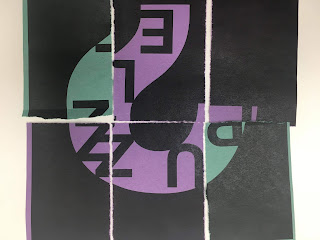There are many types of puzzles
- sliding puzzles
- jigsaw
- tetris
- connect 4
- lego
a sliding puzzle always has a missing piece for players to move the pieces
- 1880, The idea was to scramble the numbers, then rearrange them into numerical order by sliding them successively into the empty space.
- Because of wide spread of sliding puzzles, sliding puzzles had evolved from containing only numbers to imagery. Hundreds of pictures have been transformed into sliders, and increasingly more difficult arrangements of geometric shapes have challenged solvers.
--> the missing piece can be physically cut off in posters
SLIDING PUZZLE TYPEFACE by Ian Mitchell
- The system is based upon sliding puzzle games, often referred to as 8-puzzles or 15-puzzles, in which numbered or pictured square tiles can be reordered by making sliding moves that use one empty space within the puzzle.
- rule: only using 11 positive squares to from each letter
- The designer made a real sliding puzzle with 11 positive squares in it by laser cut.
--> We might not have the time for laser cutting and experimenting on real sliding puzzles. Therefore, we made one using A4 papers and cut them into pieces and rearranged them into different orders.
--> what rule should we set for our typeface?
--> shifting?
We can use the mission piece as the main theme of our project. As the theme is about puzzles, we thought about the word puzzled and it actually links well with the word puzzles as players usually feel puzzled when they are playing puzzles. This also links to the missing piece as when there is always a missing piece in the puzzles, it is puzzling.
Also, with the shifting motion of sliding puzzles, the idea of making a typeface based on the shifting rule was taken forward. The typeface was made by shifting all positive blocks of a letter to the right. As driven by the research on Ian Mitchell's project, we decided to cut A4 papers into pieces and rearrange them.





No comments:
Post a Comment